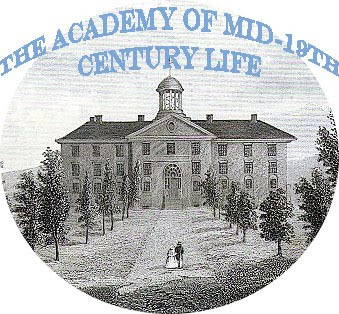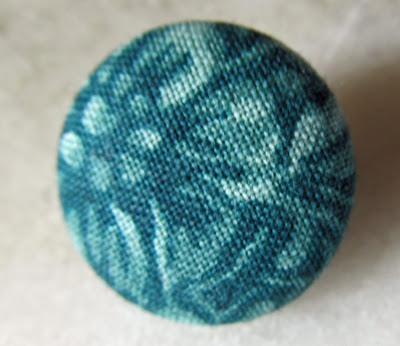
Meet the Presenter: Robin Dorman - The Magic of Music

I live and work on Mackinac Island, MI. I have been involved with reenacting for 15 years. My primary interests lie with the material culture of the mid 1800’s. Eventually I want to portray a white cooper who makes buckets, washtubs and other watertight items in use during the period.
Music has been a part of my life since I was little. Beginning at home, moving to the church environment, the school system and then adulthood, I have loved music and the emotions it can elicit from an audience. As an adult, I have performed vocally in many venues. While I have never had the discipline to learn how to play and instrument, I have great admiration for those who do.

To properly perform a piece, I try to imagine the desired emotions the writer wanted to express. Whether performing in front of hundreds or my soon to be wife at our wedding, I look into the faces of my audience to see if I have done justice to the music. I look forward to sharing with you the music of our period of interest to broaden our understanding of its influence.


The goals of the class are to strengthen your impression, introduce you to the prominent writers of the war years and to help you to know which songs are appropriate for the time. We will discuss three types of music, religious, contemporary and military/patriotic.
You will be given handouts and a CD of some of the songs we discuss to take away from the class. Make a list of the music you are familiar with through the hobby and bring it with you. We will put as many as we can into a proper timeline. Throughout the weekend at Hastings there are several opportunities to listen to and participate in performances of period music.
A bit of background:
The nineteenth century brought great upheaval to Western societies. Democratic ideals and the Industrial Revolution swept through Europe and changed the daily lives of citizens at all levels. One result of the Industrial Revolution was the creation of the middle class; this new economic strata consisted of a larger number of people with more expendable income and more leisure time than had ever existed before.
Struggles between the old world order and the new were the root causes of conflicts from the Napoleonic Wars to the Civil War. From New York, to London, to Vienna, the world was changing and the consequences can still be felt to this day. The lives of musicians, composers, and makers of musical instruments were greatly altered by these social changes. In earlier times, musicians were usually employed by either the church or the court and were merely servants to aristocratic circles. Composers wrote music for performances in these venues, and musical instrument makers produced instruments to be played by wealthy patrons or their servant musicians. With the rise of the middle class, more people wanted access to music performances and music education.

Music gained popularity in the intimate nineteenth-century parlor. At the time, home life was centered in the parlor, where children played and learned with adult supervision, and where the family entertained company. Musical performances for small groups of people became popular events, Music in the parlor was of a very different sort than in the concert hall. Solo performances and chamber music were popular, and included everything from operatic and orchestral transcriptions to sentimental love songs and ballads. In the United States, hymns and folk songs by composers like Stephen Foster supplemented the European repertoire. With the rise of the parlor as the center of family life, music education became increasingly important.
Please consider joining us for the 2nd Annual Academy of Mid-19th Century Life and increasing your knowledge of music of the period, plus more - special early bird registration is still available:
Cost for all four presentations: $25.00
Early Bird Special: $20.00 before June 4, 2011
Final registration date: July 1, 2011
Complete details available
Music gained popularity in the intimate nineteenth-century parlor. At the time, home life was centered in the parlor, where children played and learned with adult supervision, and where the family entertained company. Musical performances for small groups of people became popular events, Music in the parlor was of a very different sort than in the concert hall. Solo performances and chamber music were popular, and included everything from operatic and orchestral transcriptions to sentimental love songs and ballads. In the United States, hymns and folk songs by composers like Stephen Foster supplemented the European repertoire. With the rise of the parlor as the center of family life, music education became increasingly important.
Please consider joining us for the 2nd Annual Academy of Mid-19th Century Life and increasing your knowledge of music of the period, plus more - special early bird registration is still available:
Cost for all four presentations: $25.00Early Bird Special: $20.00 before June 4, 2011Final registration date: July 1, 2011



 Grand Hotel opened on Friday and they hosted an egg hunt for the Island kids, 1200 eggs were hidden in the Tea Garden. Most contained candy but the special "golden eggs" had prizes like dessert at the Gatehouse or a day of swimming at the Esther Williams pool - it didn't take long for them all to be collected!
Grand Hotel opened on Friday and they hosted an egg hunt for the Island kids, 1200 eggs were hidden in the Tea Garden. Most contained candy but the special "golden eggs" had prizes like dessert at the Gatehouse or a day of swimming at the Esther Williams pool - it didn't take long for them all to be collected! For those familiar with the Island and Grand, the man in the bunny suit is Bob the hotel historian.
For those familiar with the Island and Grand, the man in the bunny suit is Bob the hotel historian.














 Parked!
Parked!


 "Bird Song" is my entry in the
"Bird Song" is my entry in the 



 Look closely - you can still see just a bit of ice along the shore, but the signs of spring are starting to appear. The water near the main docks is crystal clear and just look at the brilliant colors:
Look closely - you can still see just a bit of ice along the shore, but the signs of spring are starting to appear. The water near the main docks is crystal clear and just look at the brilliant colors: 


 The tulips have sprouted in front of Grand Hotel and these daffodils are reaching skyward:
The tulips have sprouted in front of Grand Hotel and these daffodils are reaching skyward: The migrating wildlife is returning, this female merganser is being avidly courted by a bevy of males:
The migrating wildlife is returning, this female merganser is being avidly courted by a bevy of males:





